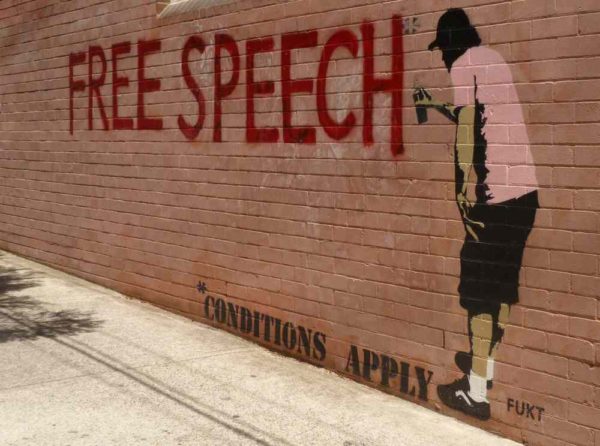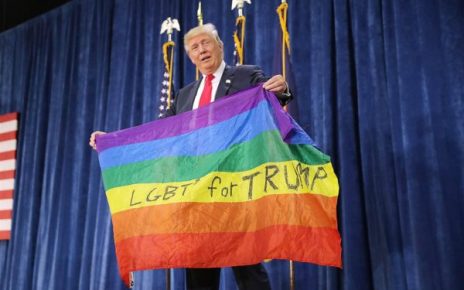Since its inception as America’s founding political document, there have been 27 amendments to the United States Constitution. Even the most adept scholars can rarely name and define each one. Many amendments are obscure and deal with legal nuances like changes in representation and how to handle US citizens who come into a foreign title of nobility. While these constitutional adjustments rarely get public attention, the First Amendment continues to spark controversy across a wide swath of the US population. What is free speech? What does the Constitution protect? What is the difference between hate speech and free speech? With the recent attention on the safe space movement on college campuses, it’s increasingly important to understand the legal parameters of the First Amendment.
Understanding Freedom of Speech
The United States Constitution is a document best understood in context. The first ten amendments were written shortly after ratification of the document and were a direct reaction to political issues and human rights’ violations that the founders experienced. In pre-revolutionary England, citizens risked penalization, censure and often even prosecution for speaking or publishing controversial views. The First Amendment’s primary focus was protecting political and religious expressions. They were, in essence, designed to safeguard the people from government pressure. Still, as late as 1798, when President John Adams signed the Alien and Sedition Acts, the scope of free speech was still up in the air. In the end, the court of public opinion decided the issue when an adverse public reaction eventually killed the legislation before the Supreme Court had a chance to weigh in.
The wording of the First Amendment is relatively straightforward. At the core, Americans receive protections to exercise their religious beliefs freely, with specific prohibitions against the government passing laws to restrict religious practice. In addition, free speech is protected as well as a free press, with no restriction on citizens assembling peaceably. The confusion comes when people don’t understand what each of those things means, or when broader interpretations are applied to legal definitions that are, in reality, more narrow.
What About Hate Speech?
Across the board, Americans are widely in support of the idea of free speech. Yet, there is a growing movement promoting social justice and hate speech restrictions. As a legal issue, those ideas are contradictory. There are exceptions to the right to free speech; it’s not anything goes. However, the limitations are quite specific. While some states have enacted targeted hate speech laws, there is no constitutional prohibition specifically addressing hate speech. In a broader sense, some hate speech may fall under the category of exceptions labeled “Fighting Words and Offensive Speech.” As early as 1942, the Supreme Court determined that spoken or written words that would likely provoke violence or incite an imminent breach of peace are not protected under the First Amendment. In addition, threatening someone directly is unprotected speech. General statements against a group, threats made as hyperbole, or words that cause emotional distress but no physical harm fall under the umbrella of free speech and cannot be prosecuted or restricted.
Free Speech and College Campuses
There is nowhere in America more volatile on the issue of free speech than the United States college campus. Traditionally, colleges are bastions of free thought and critical thinking. However, the last decade has seen a dramatic shift in corporate attitudes at institutions of higher learning. Many colleges today are left-leaning, with an ever-weakening tolerance for ideas that don’t fit into a pre-defined narrative. Conservative organizations such as the Federalist Society react with increased activism. The polarized political climate of the 2016 Presidential elections dramatically increased political correctness on college campuses, creating ideas like “safe spaces” and personal censuring. As a legal issue, these ideas are not conducive with the definition of free speech. Yet, student activism has indeed changed school policies. While some universities remain dedicated to protecting the free exchange of ideas, speakers such as Ann Coulter and Milo Yiannopoulos were pulled from the speaking docket of prestigious universities like Berkeley, an institution traditionally in support of free speech. What students may not understand, however, is that the same standard they apply to their social and political opponents creates a precedent that can also restrict their freedom of expression.
At the most basic level, the college climate illustrates why free speech is so important. Human nature causes people to pigeonhole themselves into a relatively narrow range of thoughts and ideas, largely determined by their social, religious and cultural climates. For this reason, we see such a broad divide between the far left and the alt-right political perspectives. The only way to broaden those perspectives is to challenge them with competing ideas, opening each issue up to nuance and risking a breach of safe space in favor of emotional growth and human understanding. Free speech is essential to this process. If hate speech restrictions are too broad, interference in the exchange of ideas can lead to less tolerance, the very thing social justice strives to overcome.
The Role of Social Media
For most of America’s history, the transfer of information and ideas was a slow process. Before telegram, radio and telephones, information took weeks to travel from coast to coast. Social spheres were quite small, with the majority of associations staying within a 100-mile radius of a person’s home. Social groups remained relatively uniform, with universally accepted social standards. A conservative rural community reading more liberal ideas in metropolitan newspapers would quickly dismiss them as outside their cultural context. In the last 50 years, the Internet has turned that model on its head completely. Social media exposes the full spectrum of political opinions in real time, bringing new and different ideas right to your front door. It’s impossible to pretend ignorance against conflicting ideas, and people are forced to interact with an increasingly diverse pool of acquaintances. This is undoubtedly uncomfortable and historically new, so it’s no surprise that there is broad resistance. Still, discomfort leads to both personal and societal growth, making it a net positive.
The United States Constitution legally protects your fundamental human rights. Every citizen should feel free from an immediate threat, so limited speech restrictions make sense. However, valuing free speech means that our collective tolerance for new ideas needs to increase. Redefining every negative interaction as hate speech hurts everyone, creating a climate of political correctness that ultimately muzzles every American. There is a reason that free speech is legally defined. No one person or group can impose their ideas or priorities on another, nor should they. Ultimately, these values promote mutual respect, which creates the safest public climate for all citizens across every political stripe and social issue.
Written By Sujit Choudhry




